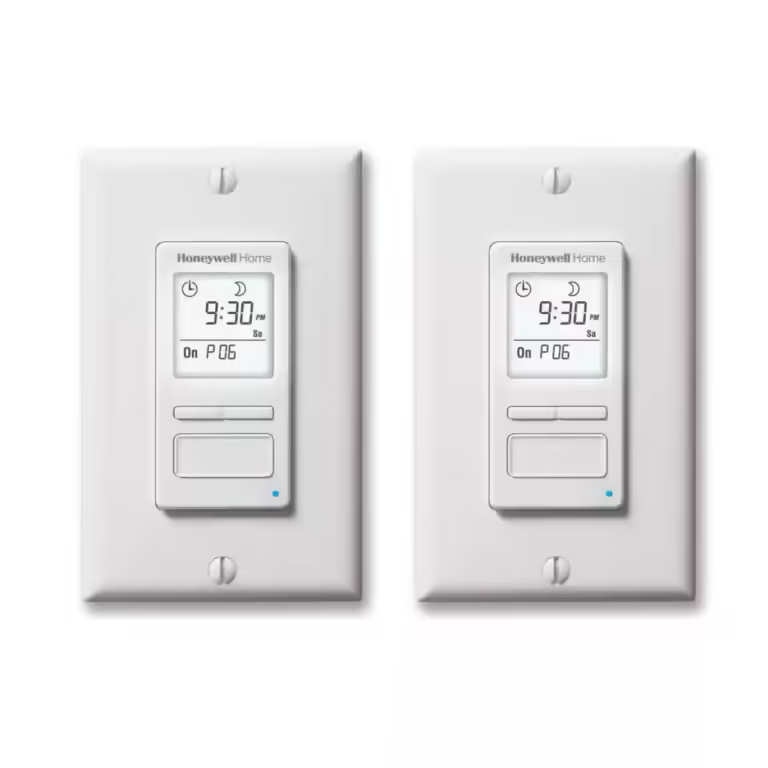Why Honeywell Thermostat Not Turning on Heat?
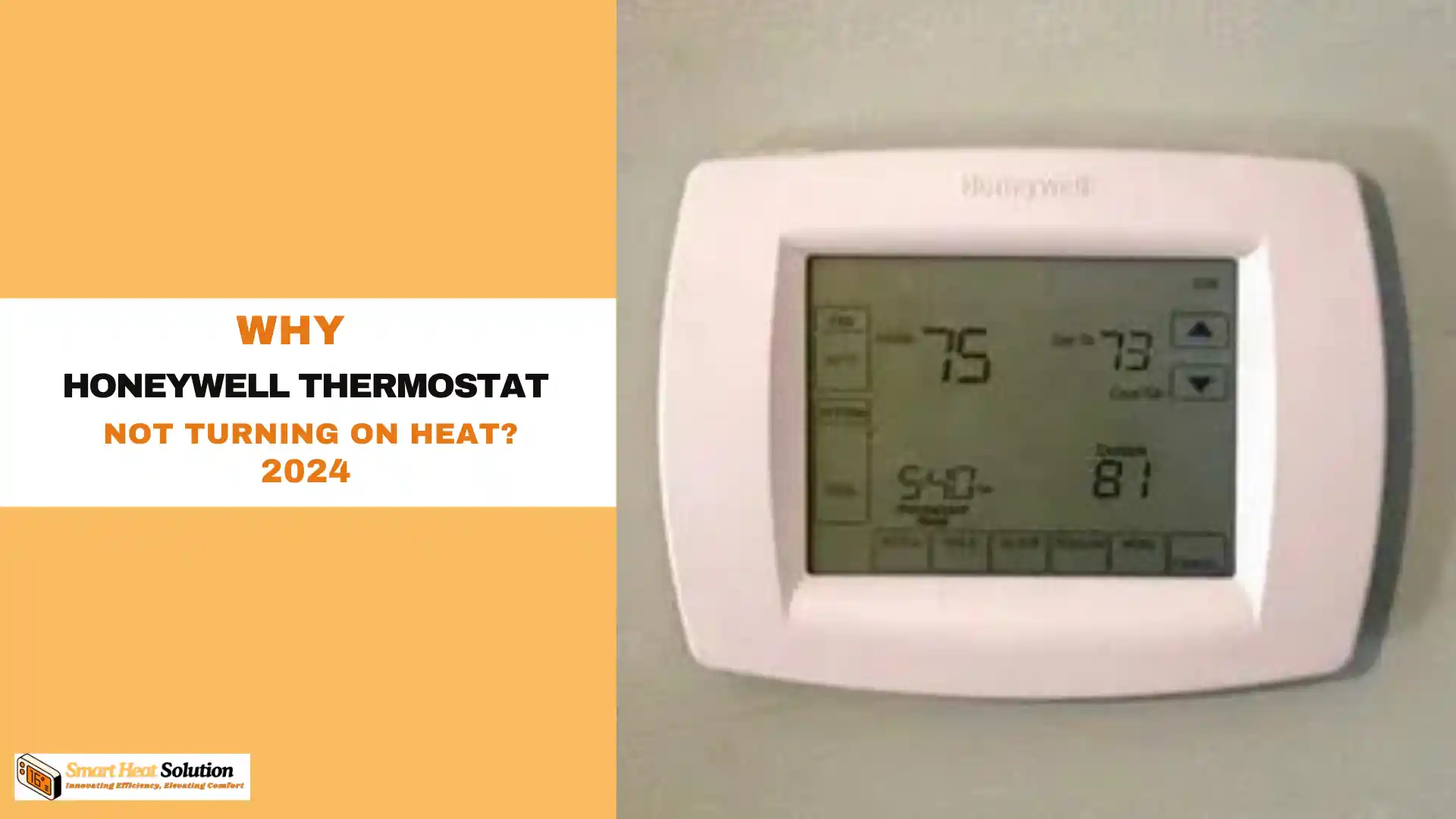
Have you ever woken up to a cold house because your Honeywell thermostat won’t turn on the heat? It’s really frustrating, especially during the winter.
Did you know that about 30% of your home’s energy use goes to heating? That’s a lot of money! So, when your thermostat isn’t working, it can mess with your comfort and your budget.
I remember one cold morning when my thermostat just wouldn’t work. I was shivering and trying to figure out what was wrong. Luckily, fixing this issue doesn’t have to be hard. In this guide, I’ll go over some common reasons why your Honeywell thermostat might not be turning on the heat and how to fix them. Let’s make your home warm and cozy again!
Understanding the Importance of a Functional Thermostat
Thermostats serve as the command center for your heating, ventilation, and air conditioning (HVAC) system. When your thermostat fails to engage the heat, not only does it compromise comfort, but it may also signal a larger issue within your heating system. Before you rush to call a technician, it is essential to understand how your Honeywell thermostat functions and explore the possible reasons behind the malfunction.
Common Reasons Why a Honeywell Thermostat Is Not Turning on Heat
Several factors can cause a Honeywell thermostat to fail in turning on the heat. Below are some of the most common causes that homeowners encounter:
1. Incorrect Thermostat Settings
One of the simplest reasons for a heating system failure is incorrect thermostat settings. Double-check the temperature settings on your thermostat to ensure they are set properly. It’s easy to overlook setting the thermostat to “Heat” mode, especially after seasonal changes when you switch from cooling to heating. Additionally, ensure the temperature setting is higher than the current room temperature to trigger the heating system.
2. Thermostat Batteries Need Replacement
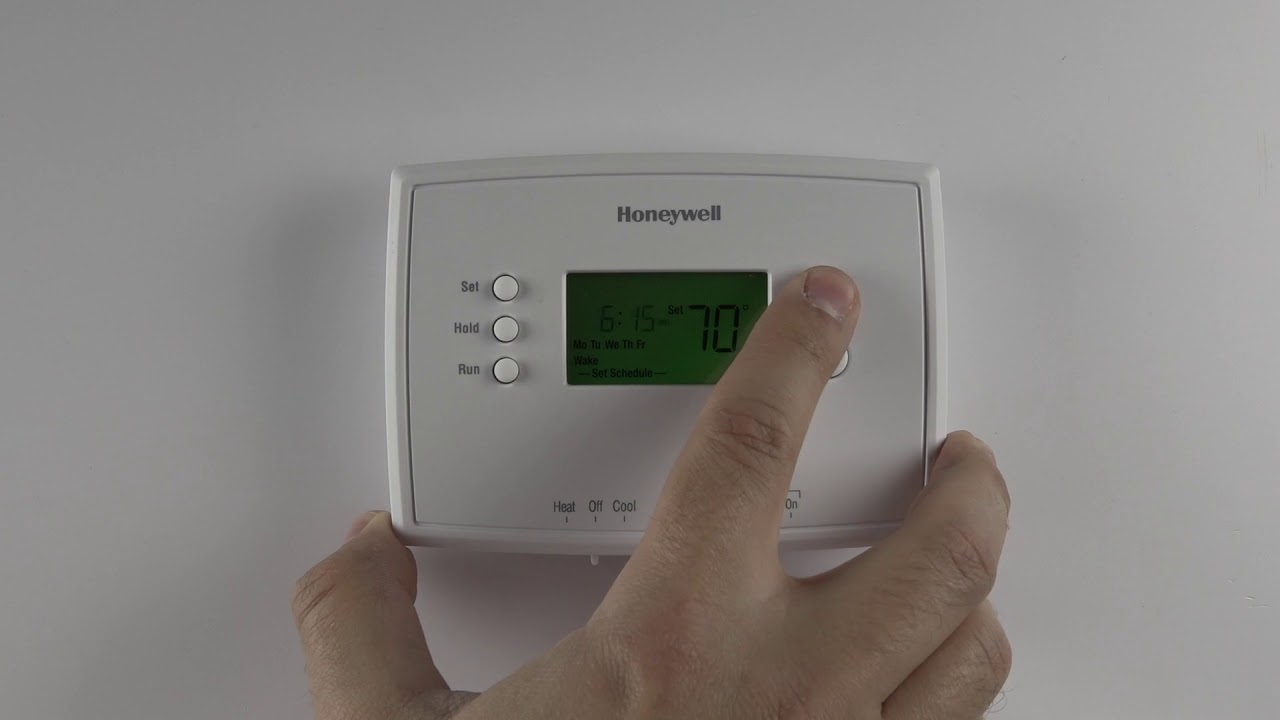
Many Honeywell thermostats, particularly digital and programmable models, rely on batteries to function correctly. If the thermostat batteries are dead or low, your device may lose its functionality, causing it to fail in turning on the heat. Check the thermostat’s display for signs of low battery power and replace the batteries if necessary.
3. Tripped Circuit Breaker or Blown Fuse
A tripped circuit breaker or blown fuse could interrupt the power supply to your heating system. It’s crucial to inspect your home’s electrical panel and check if any breakers have been tripped or fuses blown. If you find a tripped breaker, reset it and see if this resolves the issue.
4. Dirty or Malfunctioning Thermostat Sensors
Honeywell thermostats rely on temperature sensors to monitor the room temperature and signal the HVAC system to turn on the heat when necessary. If the sensor is dirty or malfunctioning, it may send inaccurate readings, resulting in the system not engaging the heat. Cleaning the thermostat and ensuring that there are no obstructions around the unit can help the sensor function more accurately.
5. Software or Firmware Glitches
Thermostats with digital displays or smart functionality may experience occasional software or firmware glitches. This could result in the system not responding to temperature changes or failing to activate the heat. Performing a factory reset or checking for firmware updates through the Honeywell app (if applicable) can sometimes resolve these issues.
How to fix Honeywell Thermostat Not Turning on Heat
If you’ve already checked the basic causes mentioned above and your Honeywell thermostat still isn’t turning on the heat, there may be more complex underlying issues. Below are additional steps you can take to diagnose the problem.
1. Inspect the HVAC System
Your thermostat communicates directly with your home’s HVAC system. If there is an issue with the furnace, heat pump, or any other component of the heating system, the thermostat will be unable to turn on the heat. Some potential issues include:
- Faulty wiring: If there is an issue with the wiring between your thermostat and heating system, it may prevent the heat from engaging. Inspect the wiring for any visible damage, corrosion, or loose connections.
- Blower motor malfunction: The blower motor circulates heated air throughout your home. If it fails, the heating system won’t operate as expected.
- Dirty air filters: Clogged air filters can obstruct airflow, leading to overheating and causing the system to shut down as a safety measure.
2. Check the Thermostat’s Wiring
If your thermostat is not turning on the heat, there may be an issue with its wiring. Loose or damaged wires can cause connectivity issues between the thermostat and your HVAC system. If you’re comfortable handling electrical components, you can open the thermostat and inspect the wiring. Ensure that all wires are securely connected to their respective terminals and that there is no visible damage. If you are uncertain about handling the wiring, it’s best to contact a professional.
3. Verify Compatibility with the Heating System
If you have recently upgraded or replaced your HVAC system, the issue may be related to compatibility between your Honeywell thermostat and the new heating equipment. Thermostats are designed to work with specific types of systems (e.g., single-stage, multi-stage, or heat pump systems). Ensure that your thermostat is compatible with your heating system model, as an incompatible thermostat may fail to engage the heat.
4.Thermostat Temperature Offset Set Too High
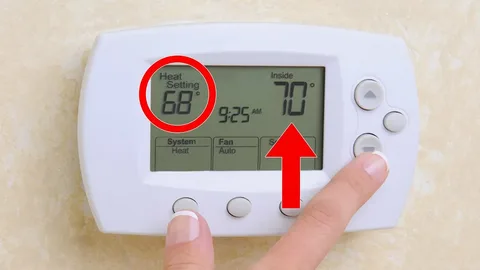
Problem
The thermostat display shows that the room never reaches the set temperature, but the heat doesn’t turn on. This might be because the temperature offset is set too high. The thermostat thinks the room is warmer than it really is, so it doesn’t activate the heat.
Example
Imagine you set the thermostat to heat at 74°F, but you have a +3°F temperature offset. This makes the thermostat show the temperature as 77°F, even though the room is actually 74°F. Since the thermostat only turns on the heat when the temperature falls below 74°F, the room has to cool to 71°F (74 – 3) before the heat turns on. So, even though you set it to 74°F, the room won’t feel warmer until it drops below 71°F. In some buildings, like on upper floors, the room might stay at 71°F, so the heat won’t turn on as often as you’d expect.
Solutions
- Lower the temperature offset: This will make the thermostat display closer to the actual room temperature, ensuring that the heat turns on when needed. It’s best to keep the offset to within one degree (either +1 or -1).
- Raise the set temperature: If you want the room to be 74°F but have a +3°F offset, you’ll need to set the thermostat to 77°F to reach the actual temperature of 74°F.
5. Mechanical Thermostats Can Freeze Up
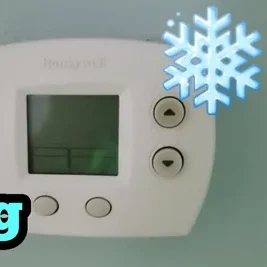
Problem
Sometimes, smart thermostats can freeze if static electricity happens nearby, or if there’s a power surge in your home. When this happens, the touch screen stops working and the temperature display doesn’t update. The heating system may also stop working, even if the room is far from the set temperature.
Fixes
To fix this, try rebooting the thermostat by turning off its power for 10-20 seconds and then turning it back on. Many thermostats make this easy because you can simply snap them off the wall plate to disconnect the power, wait a few seconds, and then snap them back on to reboot. If your thermostat doesn’t easily come off the wall, you can turn it off and on again at the circuit breaker to reboot it.
6: Thermostat Not Set to the Right Mode (Heating or Cooling Mode)
Problem
Your Honeywell thermostat might not be turning on the heat because it’s not in heating mode. On most smart thermostats, you can switch between heating mode, cooling mode, or OFF. If the thermostat is set to OFF or Cool mode, the heat won’t come on.
Solution
Make sure the thermostat is set to Heat mode. On many models, this can be done by going to the System tab, selecting “Heat,” and pressing “Done” to save the setting. You should feel the heat turn on shortly after.
7. Call a Professional HVAC Technician
If none of the above troubleshooting steps resolve the issue, it’s time to call a professional HVAC technician. Complex issues such as faulty furnace components, thermostat calibration, or electrical problems require professional expertise. A technician will have the tools and knowledge to diagnose and fix the underlying issue quickly and efficiently.
Preventive Maintenance for Your Honeywell Thermostat and Heating System
Preventing future issues with your thermostat and heating system is key to ensuring optimal performance and prolonging the lifespan of your equipment. Here are some maintenance tips to keep your Honeywell thermostat and heating system running smoothly.
1. Regularly Replace Thermostat Batteries
If your Honeywell thermostat uses batteries, make it a habit to replace them annually or as soon as you notice low battery warnings on the display. This simple maintenance step can prevent heating system interruptions due to battery failure.
2. Clean the Thermostat and Sensors
Dust and dirt can accumulate on the thermostat and its sensors over time, leading to inaccurate temperature readings. Regularly clean the thermostat with a soft, dry cloth to ensure that it functions properly. Additionally, make sure the area around the thermostat is free from dust or debris that could interfere with its operation.
3. Schedule Annual HVAC Inspections
Annual inspections of your heating system by a licensed HVAC technician can prevent unexpected breakdowns and ensure that all components are functioning efficiently. These inspections can identify and address potential issues before they become serious, saving you time and money in the long run.
Conclusion
A Honeywell thermostat that won’t turn on the heat can be a frustrating issue, but many common problems can be resolved with basic troubleshooting. From checking the settings to inspecting the wiring, there are a variety of steps you can take to diagnose and fix the issue. However, if these steps don’t solve the problem, it’s important to seek professional help to ensure that your heating system is operating safely and effectively.
By understanding the common causes and solutions for Honeywell thermostat issues, you can keep your home warm and comfortable during the colder months while maintaining the efficiency of your heating system.

I’m Alan William’s, the founder of SmartHeatSolution.com. I am from California, USA, I’m passionate about innovative heating technologies and their impact on our homes and businesses. With a background in electrican and home repair , I aim to make smart, energy-efficient heating accessible to everyone. When I’m not writing, I’m likely interested in all the thermostat brands and their new technnology. Thanks for stopping by!

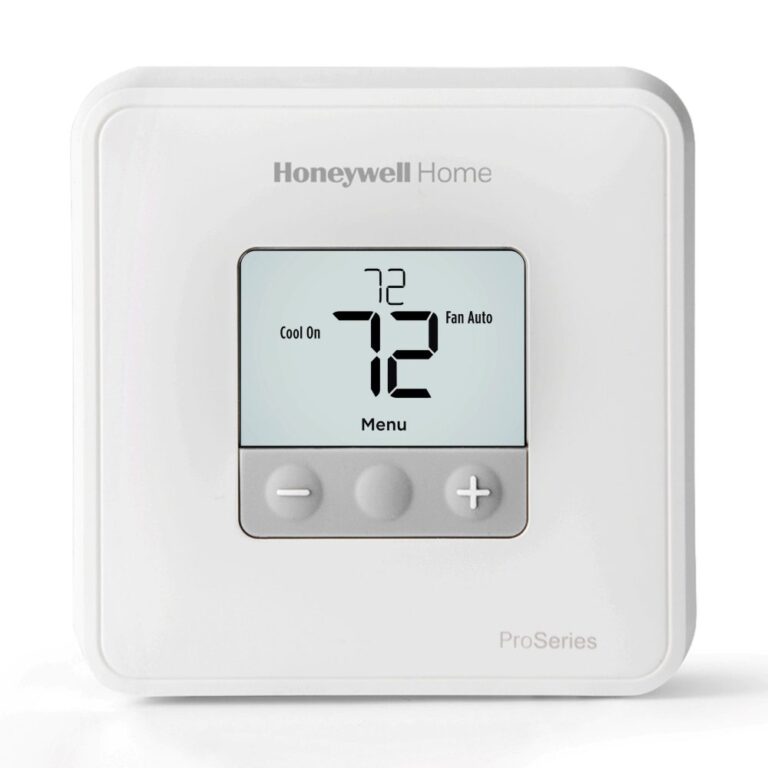
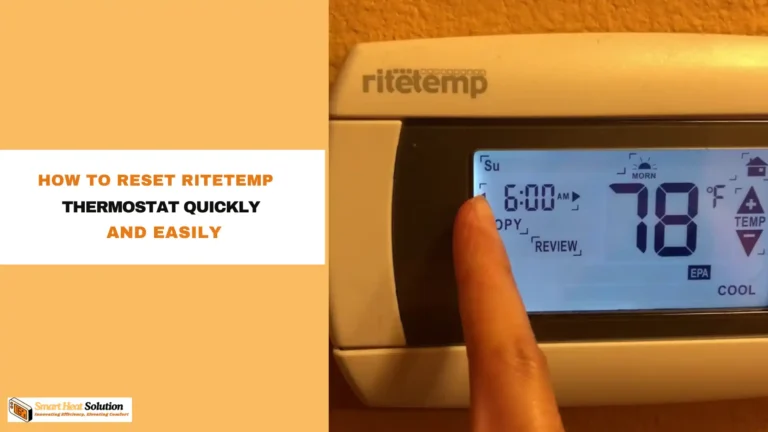
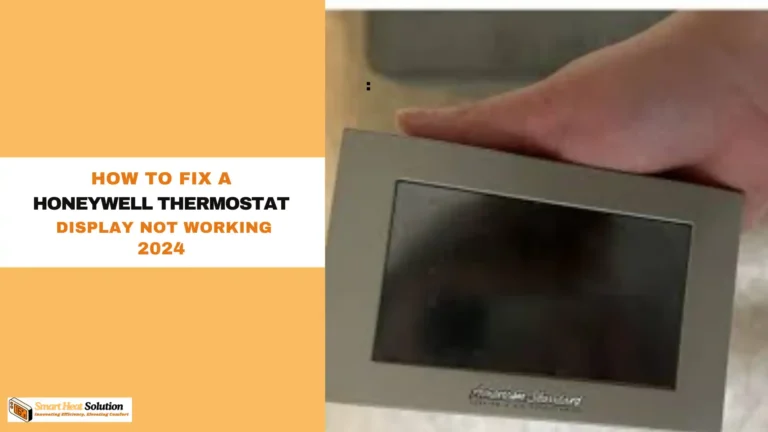
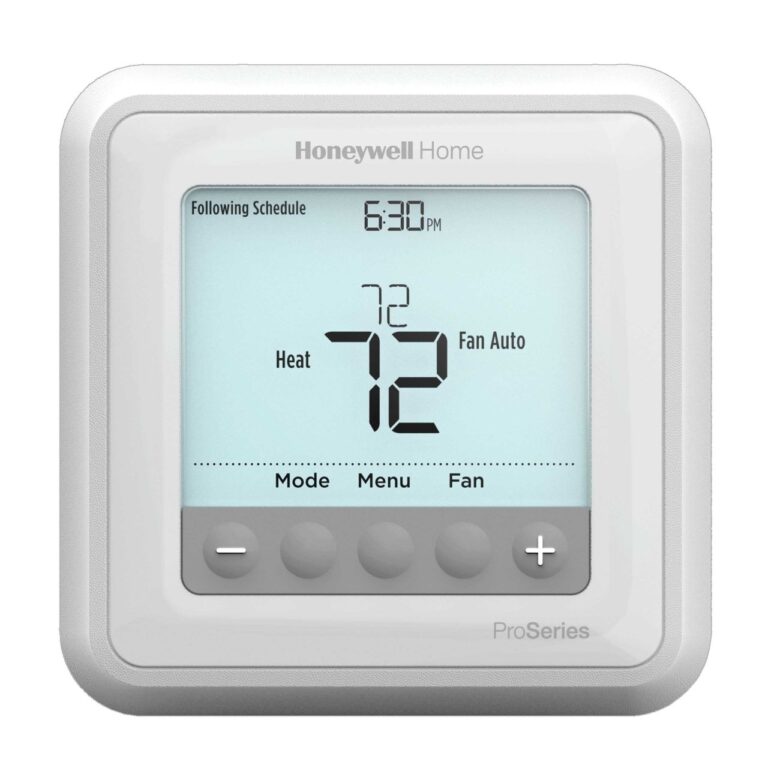
![What is O or B Orientation On Nest Heat Pump? [A Switch] 24 What is O or B Orientation On Nest Heat Pump? [A Switch]](https://smartheatsolution.com/wp-content/uploads/2024/09/tinywow_Business-2_64019743-768x432.webp)
